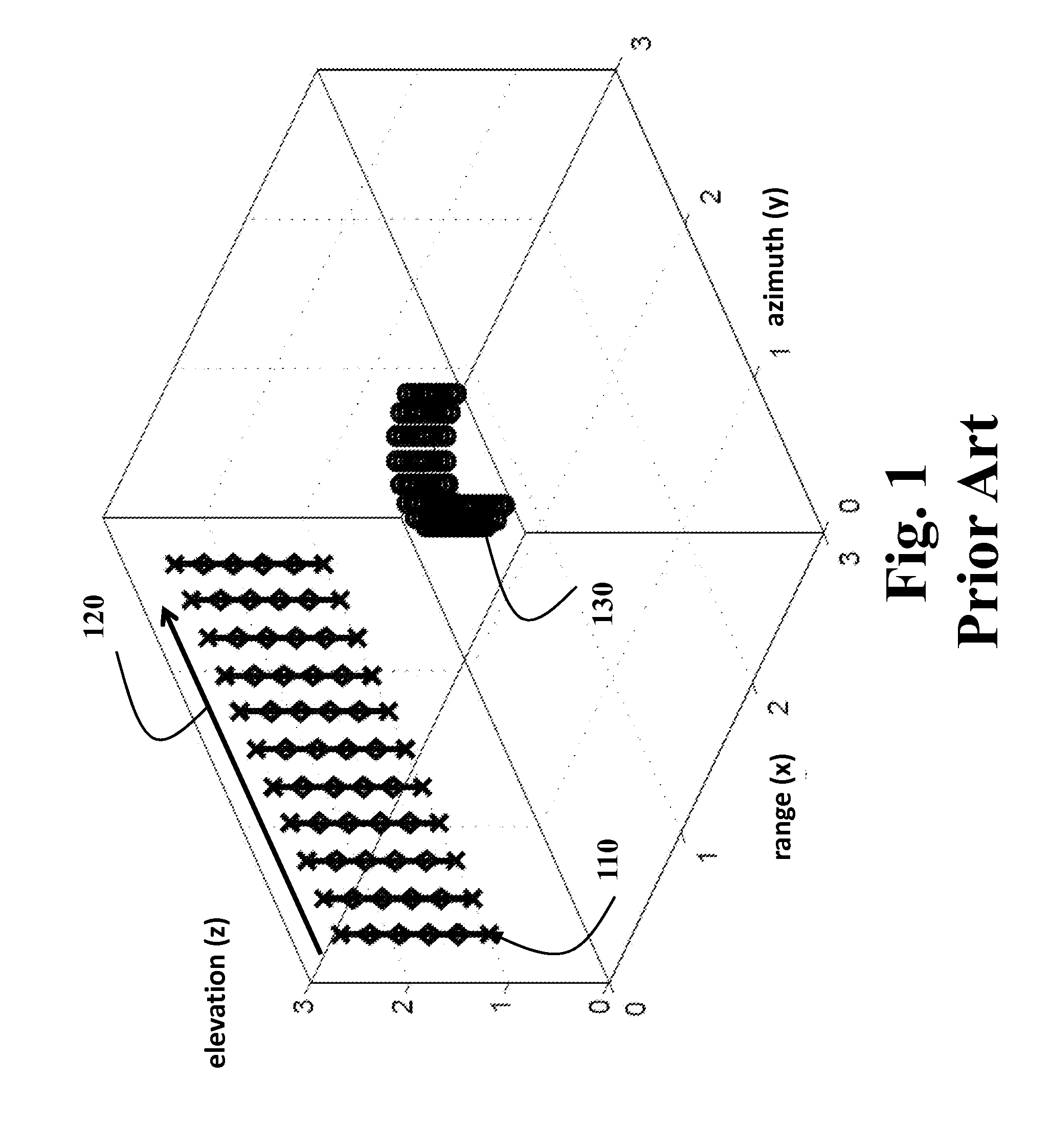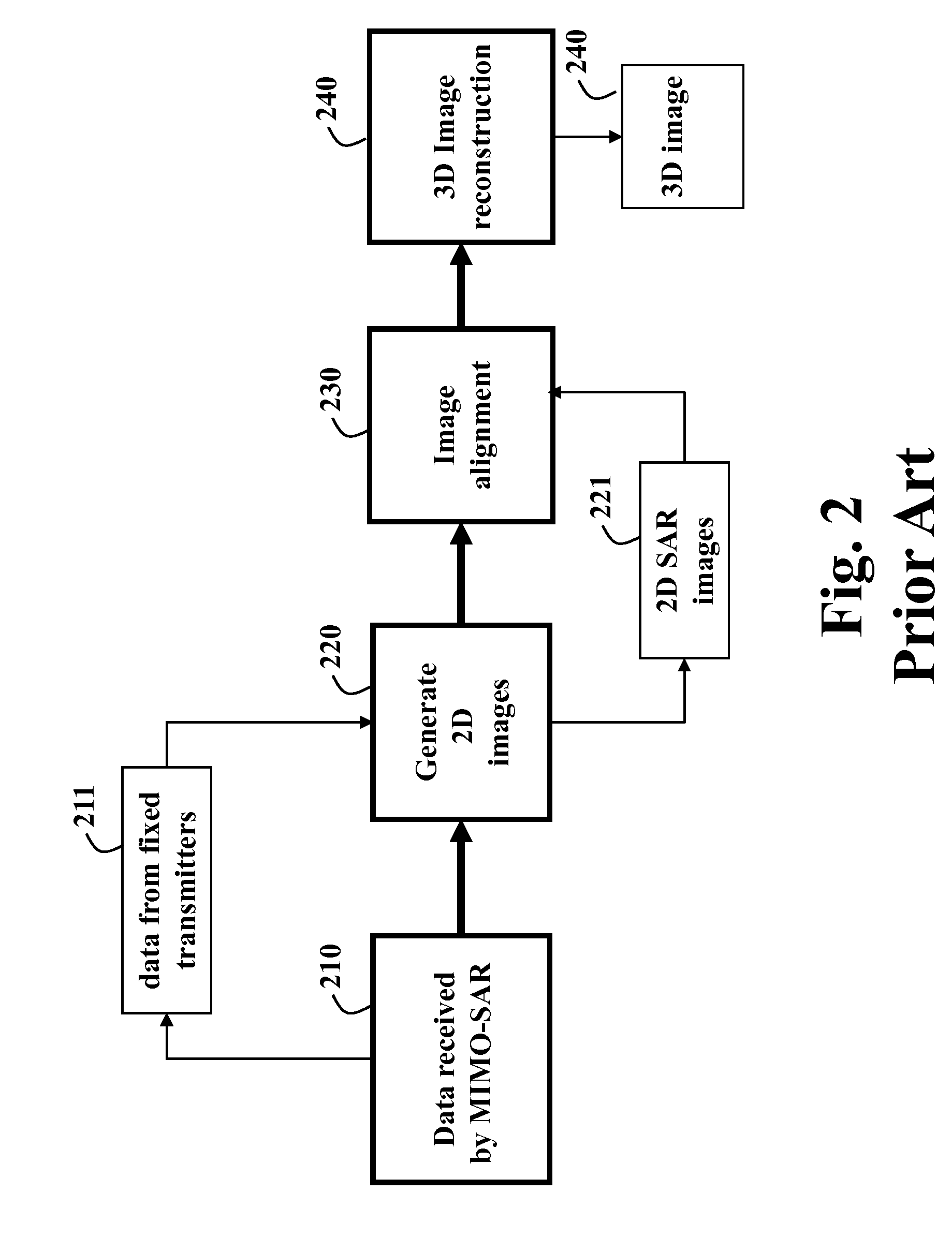System and Method for 3D Imaging Using a Moving Multiple-Input Multiple-Output (MIMO) Linear Antenna Array
a linear antenna array and moving mimo technology, applied in diversity/multi-antenna systems, instruments, using reradiation, etc., can solve the problems of multiple artifacts, inability to resolve artifacts by a single baseline observation, and the mimo array platform also suffers from several tradeoffs, so as to reduce the ambiguity, save time and expense for data collection, and improve the effect of image resolution
- Summary
- Abstract
- Description
- Claims
- Application Information
AI Technical Summary
Benefits of technology
Problems solved by technology
Method used
Image
Examples
Embodiment Construction
[0019]The embodiments of our invention provide a system and method for 3D imaging using a moving multiple-input multiple-output (MIMO) linear array with a set of antennas. The moving MIMO array uses random transmitting channels and applies compressive sensing (CS)-based imaging to deal with the 3D imaging problem taking into account the random channels and motion errors.
[0020]As shown in FIG. 3, we consider data collected by a moving 320 MIMO array 310. An orientation of the array is parallel to the elevation (z) direction. The array includes subsets of randomly selected transmit (x), and receive (x, ♦) antennas. Note, the transmit antennas can also be used to receive the RF signals after the signals have been transmitted. The array can be subject to random cross-track jitter
[0021]in the azimuth and elevation directions, which are corrected by embodiments of the invention.
[0022]FIG. 4 shows the 3D imaging method according to embodiments of the invention. The method selects 410 subse...
PUM
 Login to View More
Login to View More Abstract
Description
Claims
Application Information
 Login to View More
Login to View More - R&D
- Intellectual Property
- Life Sciences
- Materials
- Tech Scout
- Unparalleled Data Quality
- Higher Quality Content
- 60% Fewer Hallucinations
Browse by: Latest US Patents, China's latest patents, Technical Efficacy Thesaurus, Application Domain, Technology Topic, Popular Technical Reports.
© 2025 PatSnap. All rights reserved.Legal|Privacy policy|Modern Slavery Act Transparency Statement|Sitemap|About US| Contact US: help@patsnap.com



